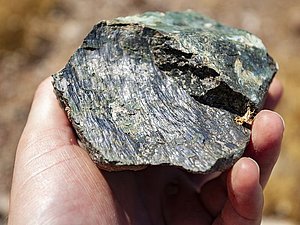The volcanoes of Methana
How was Methana created?
Methana was created around 3-6 million years ago on the east coast of the Peloponnese in the Saronic Gulf. Before there were undersea volcanic eruptions. Also existed before a few small islands, made of limestone from the Middle Ages (Triassic, Jurassic and Cretaceous period).
(Subduction) Due to the pressure of the plate of North Africa, which slid under the Asia Minor and European plates, there were tectonic movements that led to the formation of mountains and the deep-sea trench of Epidaurus.
Even today, numerous faults and rock warping can be observed in the terrain, where huge packages of rocks raised and peaks were formed like the Ortholithi top near Kalloni village.
Where there are cracks and disturbances in the earth's crust, the magma finds a way out of the earth's crust. As a result, undersea lava flows formed and pillow lavas were flowing out. Remains of these rare lava rocks can be found on Methana e.g. at the hydrothermal explosion crater "Lofiskos" and around the village Káto Moúska.
The small volcano of Poros originated in the ditch of Epidaurus and parts of the island of Aegina in the center of the Saronic Gulf, are also volcanic centres.
Many million years ago there was also volcanism in the Megara region at the Sousaki volcano and around Loutraki town.
Methana is originated on the western edge of the Saronic Gulf. There were numerous phreatic eruptions at the beginning, then for a long time only small lava domes grew.
Later there were violent phreatic explosions that formed a large caldera in the center of the peninsula, similar to that of NisyrosGeology of Nisyros volcano. Today the Stavrolongos valley is a remnant of this caldera.
After these very violent eruptions, there was a time when only lava domes were formed or lava flows flowed into the valleys. Numerous lava domes in the mountain area were created during this phase, the last one being 270 BC. the lava dome of Kameni Chora, the small lava dome Agios Andreas and the lava streams in the karst mountains of Krasopanagia are probably much older (20.000- 80.000 years?). Since 270 B.C. Methana has been in a resting phase. But volcanism is NOT over!
P.s. One clarification! If we speak about the Methana "volcanoes", in reality there is ONE volcano that is getting its magma from a few magma chambers only and there are many eruption points, that we call "volcanoes".
Geology of Methana
The volcanic peninsula Methana belongs to the westernmost part of the volcanically active arch of the Aegean. This arcuate zone of active volcanoes includes:
- Methana peninsula
- Sousaki volcano
- The archipel Milos
- The archipel Santorin
- The archipel Kos & Nisyros
All these volcanoes have been active even in (pre-)historic times:
Methana 270 B.C., Milos 200 A.D., Santorini 1950 A.D., Nisyros 1886 A.D.














